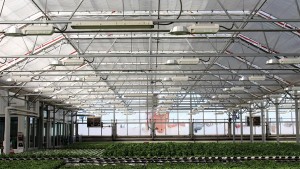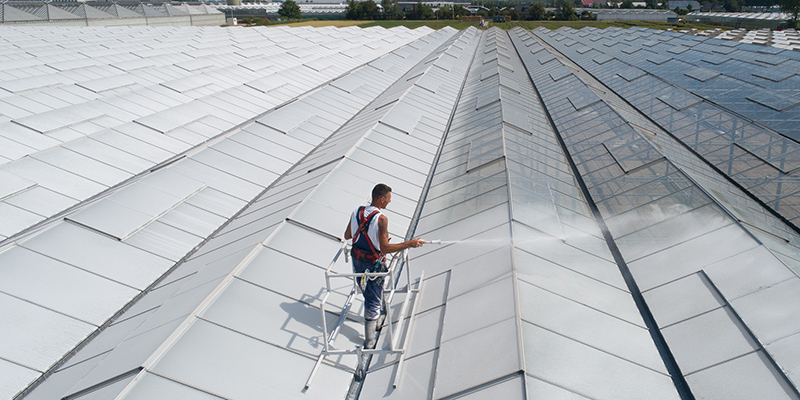How An Energy Audit Of Your Greenhouse Can Save You Money
 High greenhouse energy bills can make things difficult for any grower. However, even some of the simplest and most inexpensive repairs can result in lower energy use. For example, according to University of Massachusetts Extension, fixing a fan louver that doesn’t close correctly — leaving 1-inch gaps, allowing 23,000 BTU per hour of heat loss — can save $0.46 per hour, assuming a national average cost of $2.80 of fuel oil per gallon. In addition, Pennsylvania State Extension advises greenhouses to simply fill cracks, holes, and openings in the structure to potentially reduce the heating bill by up to 10%.
High greenhouse energy bills can make things difficult for any grower. However, even some of the simplest and most inexpensive repairs can result in lower energy use. For example, according to University of Massachusetts Extension, fixing a fan louver that doesn’t close correctly — leaving 1-inch gaps, allowing 23,000 BTU per hour of heat loss — can save $0.46 per hour, assuming a national average cost of $2.80 of fuel oil per gallon. In addition, Pennsylvania State Extension advises greenhouses to simply fill cracks, holes, and openings in the structure to potentially reduce the heating bill by up to 10%.
To evaluate these and other potential energy savings, Kristin Getter in the Department of Horticulture at Michigan State University suggests growers conduct a formal or informal energy audit.
The USDA Natural Resources Conservation Service (NRCS) offers a self-assessment tool, the Greenhouse Energy Self-Assessment Tool, that allows you to enter detailed information about your greenhouses, including dimensions, types of coverings, type of heaters, etc. For example, a fictitious greenhouse consisting of two 100-foot x 36-foot bays with 12-foot side walls was used that had no thermal curtains, was covered in traditional double-poly, and used forced air gravity vented unit heaters. The results of the program suggested multiple changes, including a 29% energy savings by switching from double poly to IR-inhibited double poly. More savings could be seen by adding thermal curtains or upgrading to high efficiency condensing heating systems.
Consider paying for a formal energy audit by a Michigan State University-trained third party auditor, especially if you intend to seek government loans or rebates that require such an audit. Depending on the size of your business, the audit may take up to four hours to complete. The auditor will ask for detailed information before the audit takes place, including a year of your utility bills, structural layouts and coverings of your structures, temperature set points throughout the year and types of heaters, motors, fans, and lighting. The auditor will then sit down with you for a two- to four-hour meeting to go over the data you provided and then tour your greenhouses. The final report will list detailed energy use by individual energy consuming appliances and options to save energy for each.
For more details on how a formal audit works and for an example of the resulting audit document, see “Greenhouse Energy Audit Overview” written by Thomas Dudek and Jeanne Himmelein from Michigan State University Extension.










